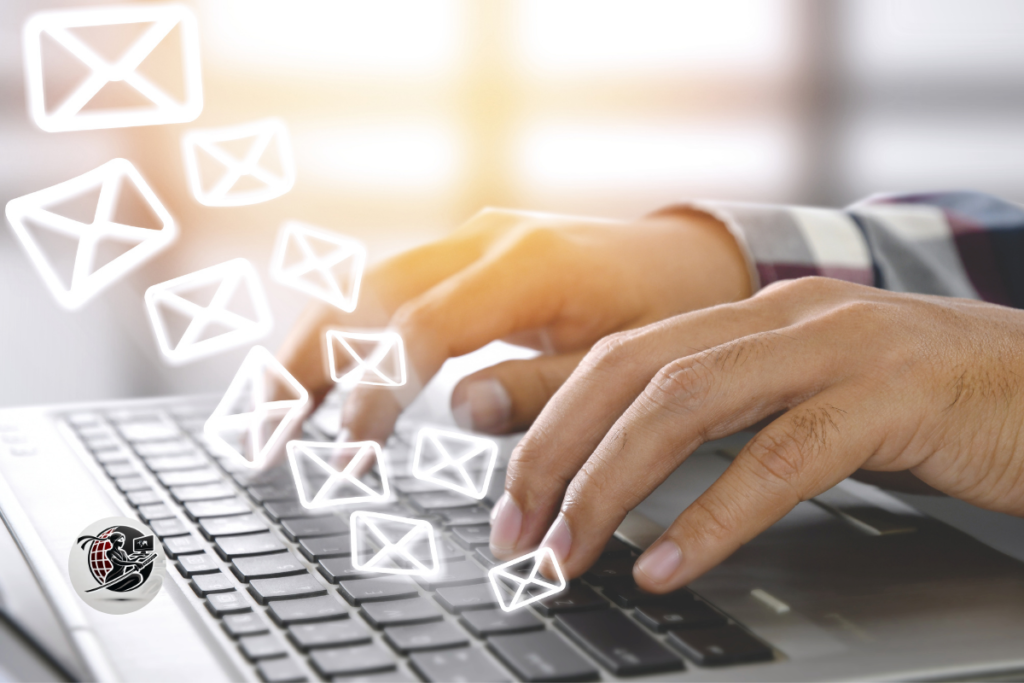Email newsletters aren’t going anywhere. In fact, when done right, they’re your direct line to the people who actually want to hear from you. Your newsletter has to stand out. With inboxes more crowded than ever, generic blasts won’t cut it.
Why They Still Work
1. You’re Not Competing with an Algorithm
Unlike social media, your email doesn’t have to fight for attention in a feed controlled by ever-changing algorithms. If someone joins your list, you land directly in their inbox. It means you have a real chance to build a relationship without fighting for visibility.
2. People Choose to Hear From You
Email subscribers have opted in. That’s already a win. They’ve raised their hands to say, “Yes, I want more from you.” These people are warmer leads than your social followers because they’ve invited you in.
3. Higher Conversion Rates
Study after study shows that email outperforms social media when it comes to ROI. Whether you’re selling products, promoting services, or just building community, email gets people to act because it feels personal. Even automated emails can feel like one-on-one conversations when written well.
4. You Own the List
Social media platforms can shut down, accounts can get hacked, and trends change. But your email list is yours. It’s one of the few digital assets you fully control and it grows in value over time.
How to Make Your Email Newsletter Stand Out
Now that we’ve established email newsletters, how do you make sure yours doesn’t get ignored, skimmed, etc.?
Here’s a practical checklist to help your newsletter rise above the noise.
1. Write Like You’re Talking to a Real Person
No one wants to feel like they’re reading a press release. Ditch the robotic tone. Use different styles. Speak in your natural voice. Pretend you’re writing to a friend over coffee (clear, casual, but still purposeful).
Instead of saying:
“Here at XYZ Solutions, we are excited to announce our new service offering…”
Try doing this:
“We’ve just launched something we think you’re going to love…”
2. Lead With Value, Not Updates
Readers want to know what’s in it for them. Sure, it’s great to include updates, but lead with tips, insights, or quick wins your audience can use right now.
Think “value first.” That could look like:
- A helpful resource
- A relatable story with a takeaway
- A tip they can apply in minutes
If every email helps them do something better, they’ll look forward to the next one.
3. Nail the Subject Line
The subject line is your email’s first impression. If it doesn’t hook them, they won’t even click. Keep it short, clear, and curiosity-piquing. Use power words or ask questions.
Examples:
- “Struggling to stay consistent? Try this.”
- “3 things your website might be missing”
- “You asked. We answered.”
4. Keep It Skimmable
People scan before they read. Break your text into short paragraphs. Use bullet points. Add bold subheadings. Make it easy for someone to get the gist at a glance, then decide to dive in.

5. Include a Clear Call to Action (CTA)
What do you want the reader to do next? Don’t leave them guessing.
Whether it’s reading a blog post, booking a call, replying to your email, or hitting that “buy now” button, give them one clear CTA. Too many choices = no action.
Put your CTA early and near the end. Some readers won’t scroll all the way down.
6. Be Consistent (But Not Overwhelming)
Whether you email weekly, biweekly, or monthly, pick a schedule and stick to it. Consistency builds trust. It also helps your audience expect and recognize your content.
But don’t overdo it. If you’re emailing five times a week just because someone said “email often,” your list might burn out. Find your rhythm and honor your readers’ attention.
7. Make It Look Good (But Don’t Overcomplicate It)
A clean, well-designed email can make a big difference. But you don’t need fancy graphics or templates. Sometimes plain text with a little formatting works best.
Try and use:
- A readable font size
- Enough white space
- Your brand colors sparingly
- Mobile-friendly layouts
Clear and simple beats flashy every time.
8. Tell Stories
People remember stories more than facts. Share client wins, personal lessons, or even something funny that happened this week. If it connects to your message and helps illustrate your point, it’s gold.
Your stories make you relatable… and that builds trust.
9. Segment Your List
As your list grows, consider segmenting by interest, behavior, or buyer stage. That way, you’re sending the right content to the right people. The more relevant your emails, the more effective they’ll be.
Even simple tags like “interested in coaching” vs. “signed up for free guide” can help you modify your content.
10. Ask for Feedback
If you’re not sure of what they want next, ask them! A quick “hit reply and let me know what you think” will allow you to gather insights and build connections.
Those replies help keep your email out of the spam folder. Win-win.







